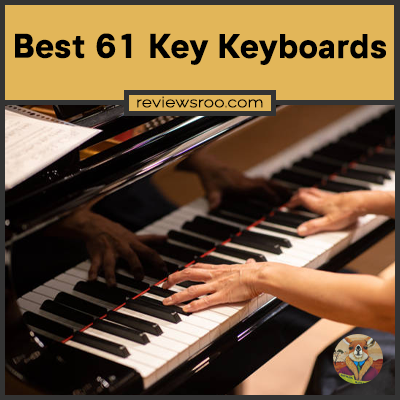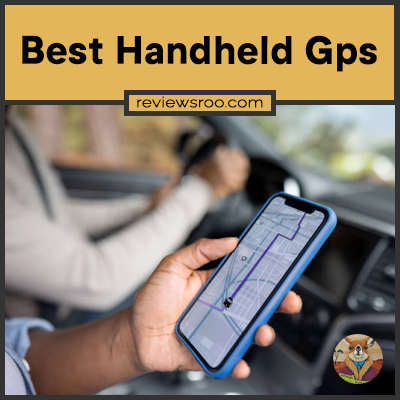Best 61 Key Keyboards
Everyone loves music. It’s something that can lift our spirits and bring us joy. But what if you want to make your own? To do that, you need a keyboard. Not just any keyboard, but one of the best 61 key keyboards on the market.

Finding the right keyboard can be daunting, with so many options available. That’s why we’ve scoured the web to bring you this list of the top ten best 61 key keyboards out there. We’ll go over their features and benefits, as well as their drawbacks and limitations. So if you’re in the market for a great 61 key keyboard, read on!
We’ve taken into account every type of player – beginner, intermediate, and advanced – in order to present an unbiased list of the best keyboards available. Whether you’re looking for a budget-friendly option or something more high-end, you’re sure to find something that suits your needs here. So let’s take a look at the top ten best 61 key keyboards on the market today!
What Are 61 Key Keyboards?
61 key keyboards are a type of musical instrument. They have 61 keys, which are used to make music. These keyboards often come with other features such as drum pads and sliders. They’re popular among professional musicians and hobbyists alike.
The benefits of 61 key keyboards include the number of keys they offer. This allows for more complex melodies and chord progressions than what is possible on smaller boards with fewer keys. Additionally, 61 key keyboards often come with extra features like drum pads and sliders that add more sonic possibilities to a composition or performance. With so much potential, it’s no wonder these boards have become so popular among musicians. Transitioning into the next section…
The Benefits Of 61 Key Keyboards
61 key keyboards offer lots of benefits. They’re great for busy musicians, providing a lot of control in a compact size. The 61 keys are ideal for piano music, with plenty of room to maneuver without feeling cramped. Plus, they’re easy to transport and store.
Many also find the slim key size easier to play than that of full-sized keyboards, so they make great practice instruments. With the right 61 key keyboard, you can explore different sounds and effects without having to invest in a larger model. So whether you want an instrument for performance or practice, these keyboards can be the perfect solution. Transitioning into the next section, let’s look at how to choose the right one.
Choosing The Right 61 Key Keyboard
Choosing the right 61 key keyboard is a daunting task. Take Chris, for example. He had been playing piano since childhood and wanted to buy an instrument that would meet his needs. After researching the features available on different 61 key keyboards, he was able to make an informed purchase decision.
The first step in choosing a 61 key keyboard is to assess your own playing style and goals. Are you looking for something to practise on or a quality instrument to perform with? Do you want something portable or something more substantial? Once you’ve narrowed down your ideal specifications, it’s time to compare brands.
Look for reputable manufacturers with good reviews from experienced players. Consider the sound quality, touch sensitivity, portability and other features of various models before settling on one that fits your budget and needs. Good luck!
Popular Brands Of 61 Key Keyboards
Different brands offer 61 key keyboards. Popular ones include Yamaha, Casio, and Korg. They come in different styles and sizes, with features for beginners and pros alike. Prices vary too – from budget-friendly choices to more expensive models.
Yamaha keyboards are known for their sound quality and range of features. Their models include the PSR E263, a beginner-friendly keyboard with an array of sounds and rhythms. The pricier Motif XF8 is designed for professionals, boasting a powerful tone generator and advanced sequencing capabilities.
Casio’s keyboards are great for learners on a tight budget. Models like the CTK-2500 provide essential features such as built-in lessons and hundreds of tones at reasonable prices. At the other end of the scale is the Privia PX-560M, which has pro features like weighted keys plus a wide selection of sounds and effects.
Korg offers something for everyone too. Its entry-level LP380 digital piano has realistic grand piano sounds plus several studio effects; while its high-end KRONOS X workstation includes advanced synthesis engines, sequencing tools, and an onboard sampler/recorder.
The choice of 61 key keyboards is vast – something for all budgets and skill levels. From there it’s just a matter of finding the best option for you…
Types Of 61 Key Keyboards
A cornucopia of options awaits anyone looking for a 61 key keyboard. Like a smorgasbord of musical possibilities, the different types of these keyboards offer something for every musician.
From weighted keys to semi-weighted and synth action, there are plenty of choices to be made. Weighted keys are great for pianists who want to replicate the feel of an acoustic instrument while semi-weighted is ideal for those who want more control and expression when playing synthesizers. Synth action is perfect for those who want a light and responsive feel when playing their favorite instrument.
TIP: Before choosing your keyboard, it’s important to understand what type best suits your needs and budget. Try out different models at your local music store and then make an informed decision on which one will work best for you. As you transition into considering connection options, it’s helpful to keep in mind any additional gear you may need to connect with your 61 keyboard.
Connection Options On 61 Key Keyboards
Most 61 key keyboards come with several connection options. USB is the most common, allowing the keyboard to connect to a laptop or desktop computer. Midi is another option, allowing for more precise control over music production software and other tools. Wireless connections are also available, though they may require an additional purchase of a receiver.
The type of connection should be considered when purchasing a 61 key keyboard. It’s important to make sure that the connection type is compatible with other equipment – such as any audio interfaces or midi controllers – that may also be used in the setup. With so many options available, there’s something for every user. Moving on from here, let’s look at popular features of 61 key keyboards.
Popular Features Of 61 Key Keyboards
The Roland A-49 is a popular 61 key keyboard. It has several features that make it stand out, such as its semi-weighted keys and 4 velocity curves. Additionally, the A-49 has an LCD screen that displays parameters and settings like octave shift, transpose and tuning.
Other popular 61 key keyboards include the Yamaha P71 and Korg M50. The Yamaha P71 has 88 graded hammer action keys with adjustable touch sensitivity and 10 built-in voices. The Korg M50 includes an 8″ TFT color touch view display for easy navigation of its more than 1,500 sounds and 200 effects.
These 61 key keyboards are packed with features that make them attractive to musicians of all skill levels from beginners to pros. Their portability makes them perfect for the gigging musician who needs a smaller keyboard but doesn’t want to sacrifice any of the features found on larger boards. And their ability to connect with external devices allows users to easily integrate their instruments into their existing workflows.
Price Range For 61 Key Keyboards
Price range for 61 key keyboards is a bit of a wild ride. It’s like trying to navigate a minefield – you never know what you’re going to get. You can find 61 key keyboards that cost as little as $50, all the way up to $1000+.
The price really depends on the type of keyboard you’re looking for. A basic digital piano with 61 keys will be the cheapest option, but if you want something more advanced with MIDI and USB capabilities, then the price will go up accordingly. For example, if you want to record music or use software instruments, then you’ll need to invest in a higher-end model. But if all you need is a basic keyboard for practice or performance, then there are plenty of budget-friendly options available.
The Best 61 Key Keyboards
Coincidence had it that he was searching for the best 61 key keyboards. He’d taken on the challenge of finding something that could fit his exact needs and budget.
He scoured the internet, looking through reviews and prices; he wasn’t about to settle for second best. After hours of research, he found what he was looking for: a few options that met both his requirements and his wallet’s demands. The picks included a range of mechanical or digital keyboards from different brands, all offering distinct advantages.
With so many choices available, it was hard to decide which one was best for him. But with careful consideration, he chose the keyboard that suited him perfectly: not too expensive but still good quality and feature-rich. With this purchase, he knew he’d be able to take his music production to the next level. Onwards now to troubleshooting 61 key keyboards!
Troubleshooting 61 Key Keyboards
Troubleshooting 61 key keyboards can be tricky. Make sure to check that the wires are connected properly and that the power switch is on. If it still won’t turn on, try plugging it into a different outlet. If after all of this it still doesn’t work, there’s probably a problem with the keyboard itself. Check for broken keys or malfunctioning parts. It may be time to replace it with a new one.
Frequently Asked Questions
What Is The Difference Between 61 Key Keyboards And 88 Key Keyboards?
The difference between a 61 key keyboard and an 88 key keyboard is significant. While both are used to create music, the number of keys available can have a major impact on the type of sound you can produce.
A 61 key keyboard typically has five octaves, including all the standard notes needed to play most melodies. The extra 27 keys that come with an 88 key keyboard provide more musical options. For example, you can access deeper bass sounds or higher treble sounds that would not be possible with a 61 key keyboard.
Here is a quick overview of what to expect from each type:
- 61 Keys: Standard size for beginner musicians; includes all essential notes for playing most melodies; five octaves; fewer options for sound exploration.
- 88 Keys: Larger size; allows for greater sound exploration; seven octaves; ideal for experienced players.
This should give you a good understanding of which type of keyboard will best meet your needs as a musician. Whether you’re just starting out or already have some experience, it’s important to consider how many keys you will need and what range of sounds they can offer before making a purchase.
Are 61 Key Keyboards Suitable For Beginners?
Yes, 61 key keyboards are suitable for beginners. They provide all the basic tools a beginner needs to learn and understand the fundamentals of playing the keyboard. A 61 key keyboard is also much more affordable than its 88 key counterpart, making it a great choice for those on a budget.
The main difference between these two types of keyboards is that the 61 keys are smaller and less spread out than the 88 keys, meaning they’re easier to play with fewer notes per octave. This makes them ideal for those who want to get started quickly with learning basic chords and melodies. However, due to their smaller size, they may not be as versatile as an 88-key keyboard when it comes to playing complex pieces or creating layered sounds.
All in all, if you’re just starting out on your musical journey and need something that won’t break the bank, then a 61 key keyboard is an excellent choice. Its size allows for easier learning and its affordability means you can focus on enjoying your music without worrying about cost.
Are 61 Key Keyboards Compatible With Mac Computers?
Are 61 key keyboards suitable for Mac computers? It’s a question many of us have been asking. On one hand, there are the compact and convenient 61-key keyboards; on the other, there’s the compatibility issue that comes with using Macs. But is it possible to bridge the gap between these two? Let’s explore:
- First, it’s important to understand that keyboards with 61 keys can connect to Mac computers. This means you can plug in your device and use it just like any other keyboard.
- Secondly, you need to check if your Mac supports MIDI input and output before you buy a 61-key keyboard. This will ensure that the device works properly and you get the most out of it.
- Finally, it’s essential to make sure the software used for your keyboard is compatible with Mac OS. If not, then you won’t be able to use all of its features or access its full potential.
The answer is yes: 61-key keyboards are compatible with Macs. All you need is an understanding of how they work and what type of software your computer requires in order to make them function properly. With this knowledge in mind, anyone can easily find a perfect match for their setup – no matter if they’re a beginner or experienced user.
Are 61 Key Keyboards The Same Size As 88 Key Keyboards?
Yes, 61 key keyboards are the same size as 88 key keyboards. They both have the same width, with some variation in length depending on the make and model. The difference between the two is that 88 keys offer more sound variety and range than 61 keys. 88 keys also allow for better control of dynamics and expression when playing certain styles of music.
While 61 keys may be suitable for some genres, it’s generally not as versatile as an 88 key keyboard. It’s important to consider your needs before investing in a keyboard, to ensure you get one that works best for you.
Is It Possible To Use A 61 Key Keyboard For Live Performances?
It is indeed possible to use a 61 key keyboard for live performances. While it may be less suited to certain styles of music, there are many ways to make the most out of this instrument. For one thing, it’s much easier to transport than an 88-key board, which can make all the difference if you’re playing gigs on the go.
Using a 61-key keyboard also means you get access to a wider range of sounds and effects than with an 88-key board. By combining the compactness of the keyboard with powerful software and virtual instruments, musicians can create some truly unique sounds that could not be achieved with traditional instruments. Furthermore, if you have limited space onstage, a 61 keyboard allows you to take advantage of what little space there is available.
Given these advantages, it’s understandable why many performers opt for the 61 key keyboard when playing live shows. It may not provide as much range as an 88-key board but its portability and flexibility more than make up for any shortcomings in sound quality or range. Overall, it’s a great option for those looking to add some variety and versatility to their live performances.
Conclusion
The 61 key keyboard is a great choice for those just starting out in the music world. Its smaller size and fewer keys make it more manageable and easier to learn on. However, it’s important to know that 61 keys aren’t always compatible with Mac computers, and they don’t have the same range as an 88 key keyboard.
Despite this, many people have found success using their 61 key keyboards for live performances. For example, one pianist I know uses her 61-key keyboard in all of her shows, despite some of the limitations it may bring. She’s learned to work within its capabilities and has been able to put on amazing performances that people enjoy.
In conclusion, while a 61 key keyboard may not be suitable for professional recording sessions or complex pieces of music, it can still be used for live performances and even recordings if you learn how to use it effectively. It’s also a great option for beginners who want to learn the basics without investing in a larger keyboard right away.





